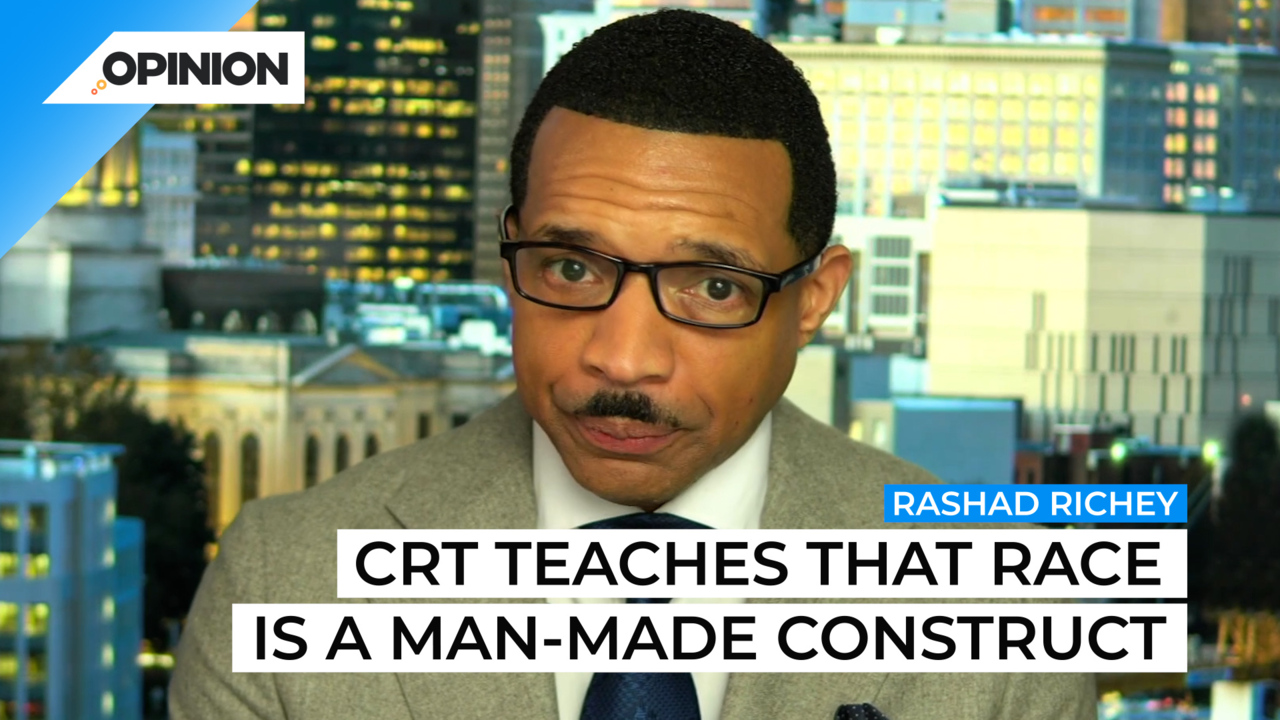
Commentary
-
Our commentary partners will help you reach your own conclusions on complex topics.
Okay, I’m gonna do something a little bit different today. Let me talk about racism in America. There’s this denial that racism exist. There’s this pushback that says, America is not a racist country. Well, let me ask you this. Is America a race free country? Is America a racist, free country? Does America have issues dealing with racism? Or racial elements involved? My point is this. Forget the terminology. Let’s call it what it is. Does racism exist in America? Yes. Virtually everyone agrees? Then it gets complicated for some. When they say, well, Doc, yes, racism exists. But I don’t know about systemic racism, or structural racism. Let me explain why that is one of the biggest hypocrisy he’s in statement. Because if you believe racism exist, you also believe that systemic racism exists. Because all it takes to go from individual racism to systemic racism is to put the individual racist in a position of systemic power. So if an individual racist becomes a manager, or director, a politician, a policymaker, a judge, then that racism that bias becomes systemic or structural, it is now contextualized through a system rather than simply through an individual to individual contact, that is your big difference. So we are basically agreeing, while claiming we are disagreeing, what is critical race theory, this big fear thing, in the conservative movement, first of all, has been here for decades, it is an advanced theoretical construct. The problem is not that CRT is taught in K through 1212. Education, because it’s not.
That’s not your problem. The problem is, is not taught, and it should be. Let me explain. While the mechanisms the theoretical construct of CRT is too advanced, typically, for any k through 12, learner, some of the elements could be taught to those who teach students. You see, we all understand that thinking critically is a good thing. Critical Race Theory, which is one of many theoretical frameworks that looks at social design, in order to understand contrast outcomes. This particular theoretical framework simply poses a question, why?
In that comes a critical analysis of race? Not race in the sense of demographics? Let me explain. Critical Race Theory actually teaches that race is a man made construct. Yes, that’s what it teaches that race itself, the category is a man made construct. But because of that manmade construct, Real Social Dynamics have been produced. Some are adverse, especially to people of color. Because people of color have not been the dominant group in the United States of America. This is why you have such extreme numbers as it relates to whites in America, and everybody else.
That is simply once again, a theoretical.
Anti CRT is one of the most insane movements, I can think of you know why? Because literally, it only challenges a person to think critically. If you don’t believe that a particular impact or outcome, had anything to do with race, after a critical analysis, that’s fine. But at least you thought critically about it. You see, they don’t want you to think, is the issue. It’s not about race. It’s about your thought process. They want you to accept whatever they give you. I want you to be a thinker. I want you to have a critical analysis of the facts. I want you to be a thoughtful
person who engages with the content. That is what we should all strive for. Food for thought, is race, an issue that at some point, in the future, we will actually be able to agree about
-
Joy Reid firing at MSNBC rooted in systemic bigotry
Host Joy Reid has been fired from MSNBC as part of a broader slate of programming changes under new network president Rebecca Kutler. Declining ratings after the 2024 election may have influenced MSNBC’s decision. The decision has polarized media observers across the political spectrum. Some liberal viewers, journalists, and activists argue that the firing is… -
Hypocritical Elon Musk has all the power with zero accountability
Elon Musk has become a pivotal and highly controversial figure in Donald Trump’s second term as president. His stance on free speech has also been contentious, with critics accusing him of hypocrisy due to actions and statements that sometimes contradict his stated principles. Watch the above video as Straight Arrow News contributor Dr. Rashad Richey… -
How Democrats should combat Trump’s illegal takeover
In a recent “Dear Colleague” letter, Senate Minority Leader Chuck Schumer, D-N.Y., laid out a strategic roadmap for Democrats to counter the Trump administration, calling its actions a “coordinated assault” against the interests of the American people. While the Democratic minority has had little power to stop Trump’s efforts to dismantle federal agencies and expand… -
Republicans need to take a stand against Elon Musk
Elon Musk has come under heavy public criticism lately for a number of bold actions that experts say are illegal, unconstitutional and dangerous to national security. While Democrats have been pushed hard by their constituents to raise protests against Musk’s moves, Republicans in Congress have been quiet, at times even defensive of Elon Musk. Watch… -
Trump’s mass pardons of Capitol rioters undermines US democracy
Over 200 rioters serving prison sentences for their roles in the Jan. 6, 2021 attack on the U.S. Capitol have begun to be released shortly after President Trump began his second term as president. Trump issued pardons to more than 1,500 individuals, including those who had assaulted police officers. The “full, complete and unconditional” pardons…
Latest Opinions
-
 Getty Images
Getty Images
US changes course, pauses tariffs for all USMCA goods until April 2
-
 AP Images
AP Images
More than half of global fossil fuel-related CO2 emissions linked to 36 companies
-
 Getty Images
Getty Images
Zelenskyy foes met with Trump camp, oppose wartime election: Report
-
 Getty Images
Getty Images
Trump preparing to sign executive order to begin closing Department of Education
-
 Getty Images
Getty Images
Fake bomb threat called during Pro-Palestinian protest at Barnard College
Popular Opinions
-
In addition to the facts, we believe it’s vital to hear perspectives from all sides of the political spectrum.






